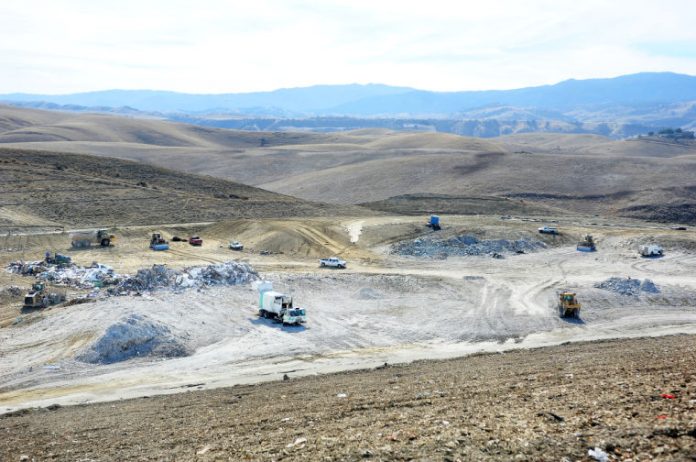San Benito County diverted $4.8 million of rate-payer funds from the Landfill-Solid Waste enterprise to the General Fund and implemented a crippling agreement with the landfill operator to increase acceptance of out-of-county waste in order to get their hands on the money. In addition to diverting the funds, which the county denies was illegal, its own internal documents reveal that it failed to take adequate actions to protect the landfill capacity, address the environmental concerns or transportation impacts including road maintenance/litter, and failed to obtain a any revenue increase from out-of-county waste, which was the agreement’s original purpose.
From the public policy point of view, this operation was a failure while adding significant indirect costs and adverse impacts to the county residents.
The county was cautioned several times by residents that the diversion was ill-advised at best and possibly illegal and that the capacity issues, environmental and transportation impacts were going unevaluated and uncorrected. The funds diverted by the county could have been used for rate reductions/stabilization and/or to correct the obvious contract deficiencies, but the county wanted the money for other purposes and to pay underfunded retirement accounts so it grabbed the funds.
To understand the issue of ratepayer diversions one must understand the difference between types of government funds.
A General Fund is designed to benefit the government, on the other hand, revenue from an Enterprise Fund is for the benefit of the enterprise and its users. An enterprise is essentially a business that provides specific, defined, services at cost. Simplified, General Fund money belongs to the government while Enterprise Fund money belongs to the enterprise and the ratepayers. The county-wide Landfill-Solid Waste is an Enterprise Fund.
To further understand out how the county sold “assets” from an on-going enterprise belonging to the ratepayers and pocketed $4.8 million you’ll have to follow the money.
A landfill has to accumulate funds as it operates to close and monitor the environment for many decades after its useful life is over. This is called a closure fund. A landfill’s licensed capacity, the number of years it can function before it’s full, is an asset owned by the enterprise fund just like a truck. A full landfill is mostly a liability, it no longer can charge for taking waste.
According to the San Benito County Comprehensive Annual Financial Report, “On April 1, 2014, Waste Connections Inc., the contract operator of the landfill, notified the County that they were exercising their right to enter into a new Landfill Operating Agreement. One of the conditions of the new Agreement was the transfer of the closure and postclosure liability from the County to Waste Connections Inc.” This was done, “thereby freeing the dedicated County Enterprise funds held for this purpose.”
The dedicated enterprise funds (the existing closing funds) were approximately $4.8 million at the time with more payments into the future. The money came from fees paid by the users. In exchange for accepting this liability Waste Connections received contract changes to increase the amount of out-of-county waste they could put in the landfill and this would shorten the landfill’s life by many years and increase undesirable impacts such as road wear and traffic.
The enterprise sold landfill space (and shortened years of life) in exchange for total post-closure liability and a refund of the money, $4.8 million, already on deposit in the enterprise closure fund.
However, rather than leave the freed up $4.8 million in the enterprise fund for the benefit of the fund and its ratepayers, the county transferred the money into its General Fund and eventually a large portion of it into an irrevocable trust for retirement benefits where the enterprise cannot get it back. Additionally, they failed to credit the ratepayers for that money or reduced payments by lowering the fees. In simple terms the county diverted $4.8 million from the people who pay the trash bills and own the enterprise to pay their general bills.
To add insult to injury, the county has discovered that in spite of an enormous increase in the out-of-county tons disposed, skyrocketing gross revenues and unmitigated impacts, there has been no increase in revenues to the county (which does not even acknowledge the $4.8 million it diverted from the ratepayers).
At the same time annual in-county waste disposal dropped from 90,000 tons annually to 80,000 tons annually over the 7-year period. Annual out-of-county waste disposal first exceeded in-county waste disposal between 2013 and 2014.
Therefore, the landfill is taking in 16 times the total annual out-of-county waste then it did in 2009, but the county’s net return has stayed flat; when corrected for inflation, the revenue is actually less than it was when it started. Meanwhile the transport of those nearly one-quarter million tons of out-of-county waste wears the roads, increases traffic, pollutes the air, adds noise and litter and shortens the life of the landfill for no net return.
This is the kind of blind disregard of business fundamentals that comes from chasing dollars regardless of the true and long-term cost to the residents and ignoring repeated public warnings that you can’t get something for nothing.
Now the county is trying to get Waste Connections to mitigate the faults in the agreement, but the county also needs to return that $4.8 million it pocketed to the Landfill enterprise where it belongs and use it to pay for mitigating its own errors. That money belongs to the enterprise and the ratepayers, not the General Fund.








